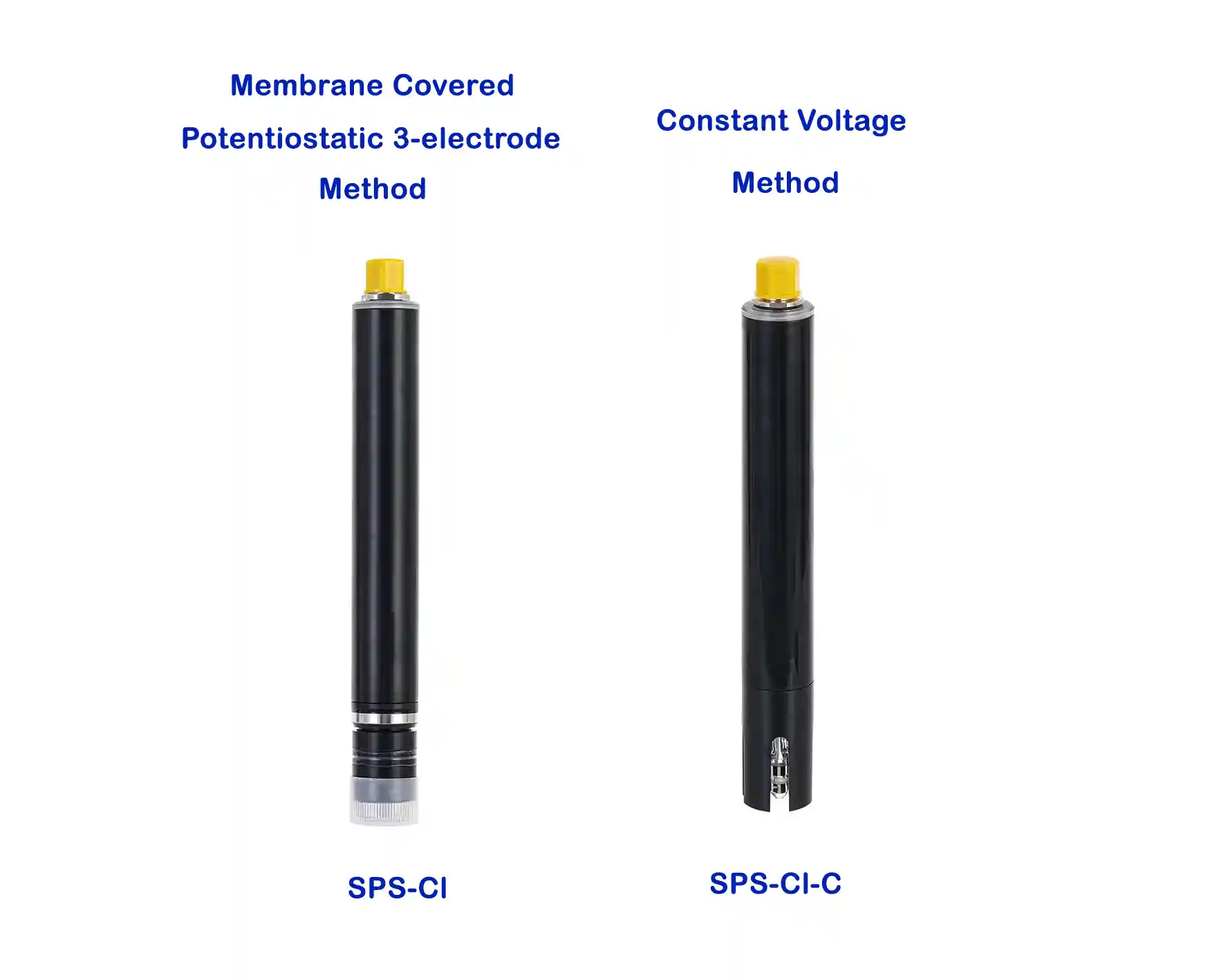The membrane-covered potentiostatic 3-electrode method and the constant voltage method are both electrochemical techniques, but they differ in their control mechanisms, applications, and experimental setups. Below is a detailed comparison:
1. Membrane-Covered Potentiostatic 3-Electrode Method
- Principle:
- Uses a potentiostat to maintain a constant potential between the working electrode (WE) and the reference electrode (RE) while measuring the current between the WE and the counter electrode (CE).
- A membrane covers the working electrode to selectively allow certain species (e.g., dissolved oxygen in Clark-type sensors) while blocking interfering substances.
- Key Features:
- Potential-controlled: The potentiostat adjusts the current to maintain a fixed potential at the WE vs. RE.
- 3-electrode setup:
- Working Electrode (WE): Where the reaction of interest occurs.
- Reference Electrode (RE): Provides a stable reference potential.
- Counter Electrode (CE): Completes the circuit without affecting the WE potential.
- Membrane role: Enhances selectivity by allowing only specific analytes to reach the WE.
- Applications:
- Dissolved oxygen sensors (Clark electrode).
- Biosensors (e.g., glucose sensors).
- Corrosion studies where selective ion transport is needed.
2. Constant Voltage Method
- Principle:
- Applies a fixed voltage (not necessarily controlled vs. a reference electrode) between two electrodes (often a 2-electrode setup).
- The current is measured as a function of time or analyte concentration.
- No active potential regulation (unlike a potentiostat).
- Key Features:
- Voltage-controlled but not potentiostatic: No feedback loop to maintain a precise potential vs. a reference.
- Simpler setup: Often uses 2 electrodes (working and counter).
- No membrane (usually): Unless specifically designed for selectivity.
- Current can drift over time due to polarization effects.
- Applications:
- Basic electrolysis experiments.
- Conductivity measurements.
- Some amperometric gas sensors (without potential fine-tuning).
Key Differences
| Feature | Membrane-Covered Potentiostatic 3-Electrode | Constant Voltage Method |
|---|---|---|
| Control Mechanism | Potentiostatic (fixed WE vs. RE potential) | Fixed applied voltage (no reference electrode) |
| Electrode Setup | 3-electrode (WE, RE, CE) | Usually 2-electrode (WE & CE) |
| Potential Stability | Highly stable (RE ensures accuracy) | Less stable (no reference) |
| Membrane Usage | Yes (for selectivity) | Typically no |
| Current Measurement | Measures faradaic current precisely | Measures total current (may include drift) |
| Applications | Biosensors, corrosion studies, O₂ sensing | Basic electrolysis, simple amperometry |
Conclusion
- The membrane-covered 3-electrode potentiostatic method is more precise and selective, ideal for analytical applications where potential control and selectivity are crucial.
- The constant voltage method is simpler and less precise, suitable for basic electrochemical experiments where exact potential control is unnecessary.

